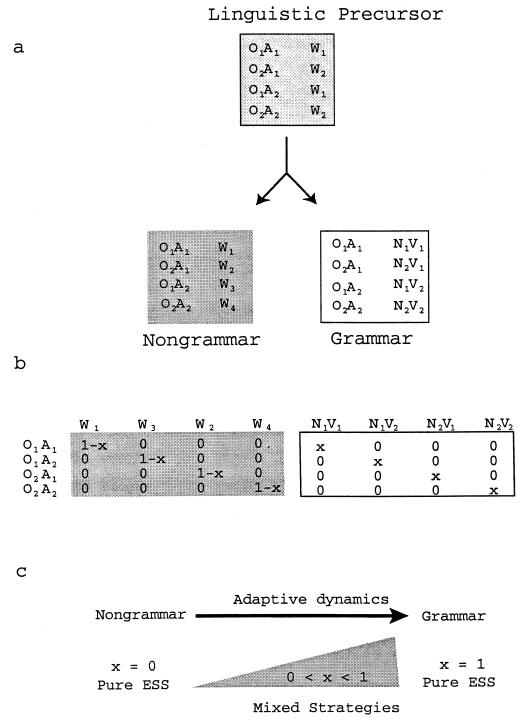Figure 4.
Grammar can evolve by natural selection. (a) Imagine a simple protolanguage describing two objects, O1 and O2, by two words, W1 and W2. Suppose each object can occur with two actions, A1 and A2. Thus, there are four events, O1A1, O2A1, O1A2, and O2A2, that are described by two words. However, simply specifying the object may be less valuable than specifying the object and describing its action. Therefore, the language can be improved by distinguishing between all 4 events. This improvement can happen in two ways: (i) a nongrammatical approach is to specify four words, W1–W4, for these events; (ii) a grammatical approach is to have two words, N1 and N2 (nouns), for the objects and two words, V1 and V2 (verbs), for the actions. (b) The active matrix, P, for a range of mixed strategies that use the grammatical or the nongrammatical approach with probability x. The pure strategies are nongrammar (x = 0) and grammar (x = 1). (c) Both nongrammar and grammar are evolutionarily stable strategies (ESS), but every mixed strategy, x, is dominated by all mixed strategies, y, with y > x. The adaptive dynamics (42–44) flow from nongrammar to grammar.

